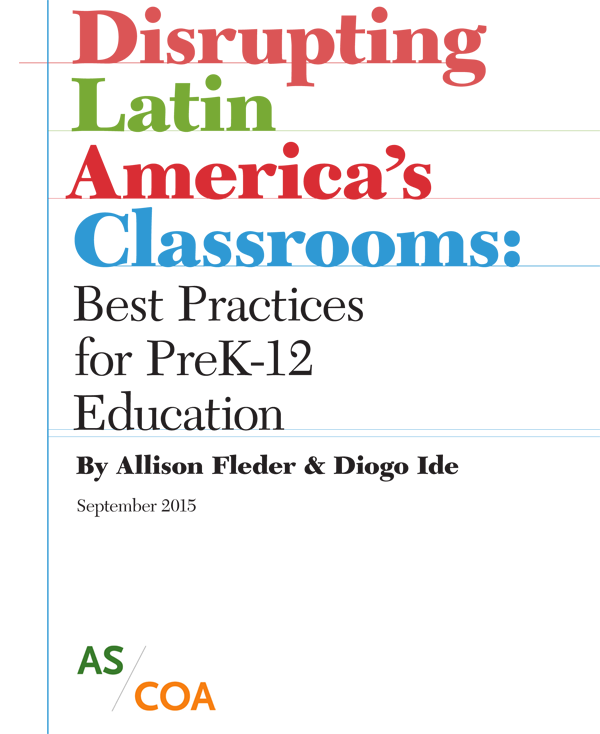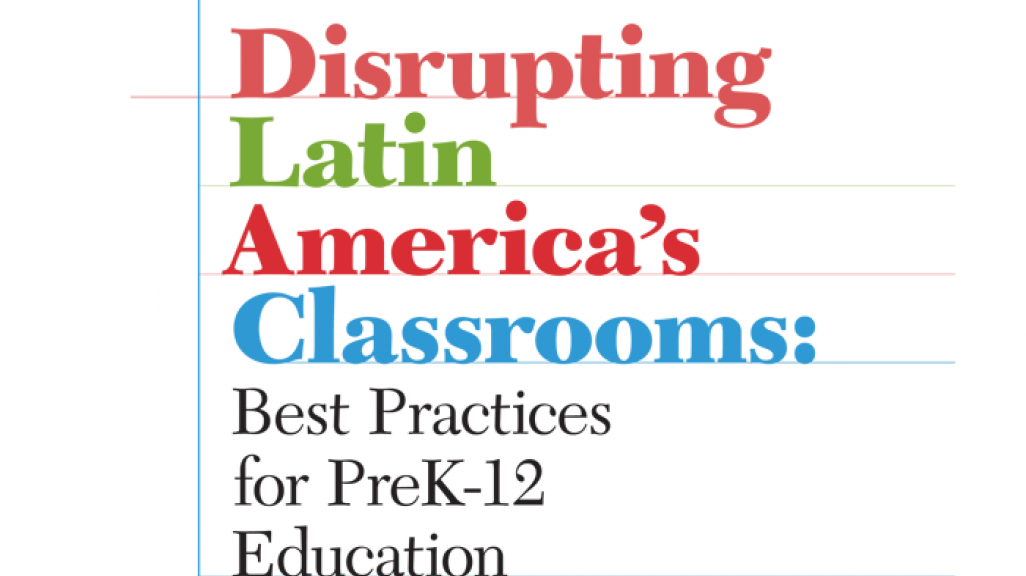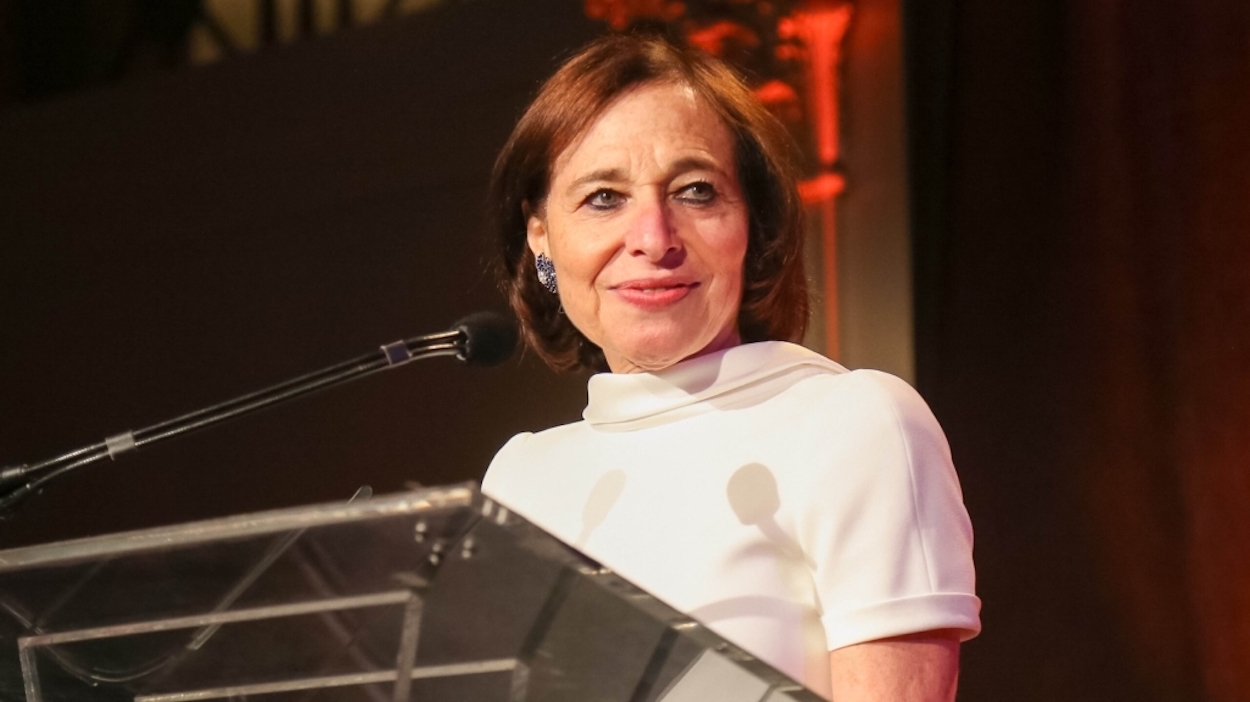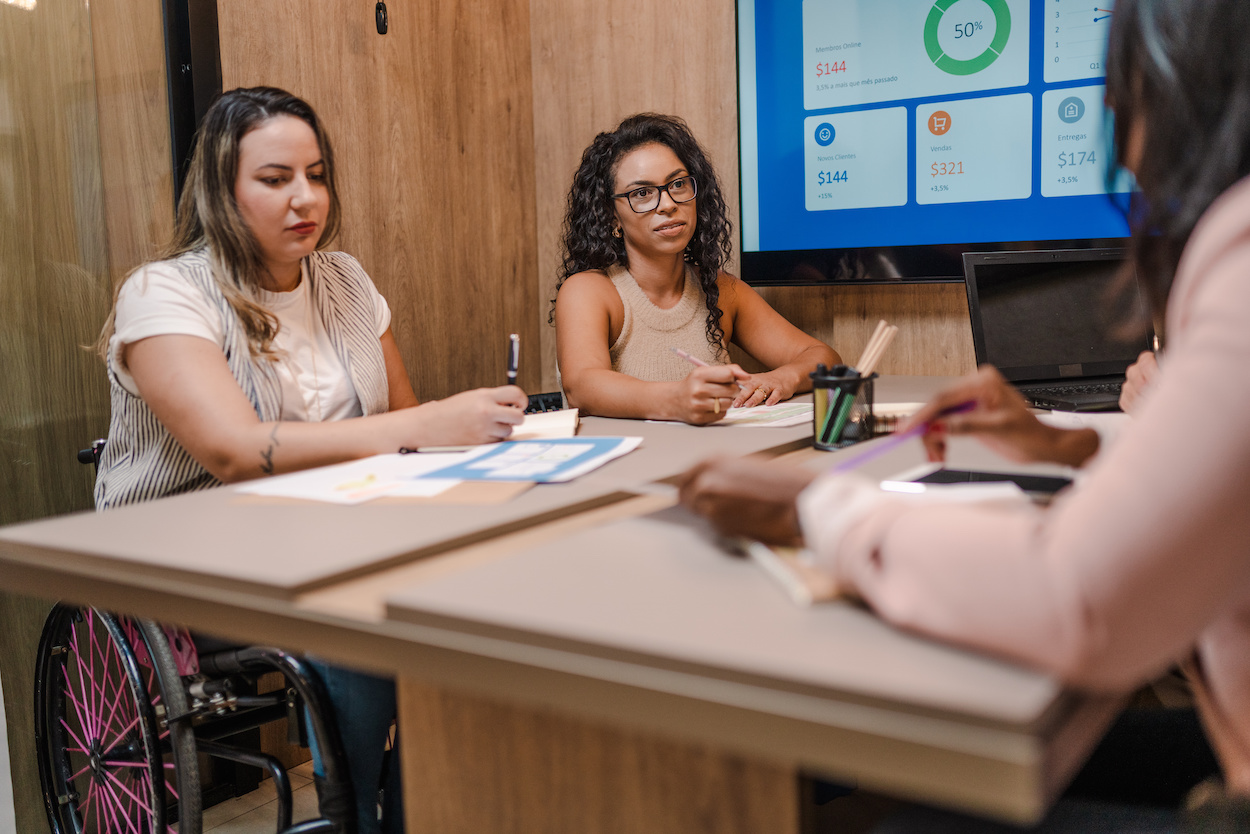Disrupting Latin America's Classrooms: Best Practices for PreK-12 Education
Disrupting Latin America's Classrooms: Best Practices for PreK-12 Education
A new white paper looks at how innovation can help Latin America leapfrog educational hurdles.
 In Latin America, education is facing multiple challenges. While access to primary education is close to universal today, tremendous numbers of students are not finishing school; barely 40 percent graduate from the secondary level across the region. Innovative solutions and new technologies are emerging globally with the potential to help countries in Latin America leapfrog the most pressing challenges they face in education. The sharing and cross-fertilization of best practices of these models can help to bring Latin American schools into the twenty-first century.
In Latin America, education is facing multiple challenges. While access to primary education is close to universal today, tremendous numbers of students are not finishing school; barely 40 percent graduate from the secondary level across the region. Innovative solutions and new technologies are emerging globally with the potential to help countries in Latin America leapfrog the most pressing challenges they face in education. The sharing and cross-fertilization of best practices of these models can help to bring Latin American schools into the twenty-first century.
Americas Society/Council of the Americas in conjunction with the co-chairs of its Chairman’s International Advisory Council organized a roundtable discussion on March 11, 2015 on scalable, disruptive models for preK-12 education. Private- and public-sector leaders, entrepreneurs, and education experts discussed a number of initiatives already springing up across the world through public-private partnerships.
We are pleased to share the roundtable’s conclusions in the white paper Disrupting Latin America’s Classrooms: Best Practices for PreK-12 Education. The publication explores the opportunities and challenges for the effective implementation of new technologies in education.
Recommendations:
- Technology can be a powerful tool for education—but it is not a silver bullet and must be effectively implemented to achieve results.
- Teachers must be appropriately trained to integrate new technologies into classrooms so that students become active learners facilitated by their educators.
- Schools should embrace technology, in conjunction with traditional teaching methods, as it offers the opportunity for more personalized learning.
- In an increasingly connected world, it is more critical than ever to foster an educational community that supports students and teachers.








